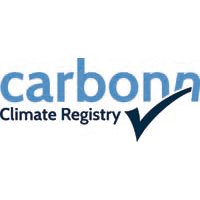Carbon Climate Registry
The carbonn© Climate Registry (cCR) was launched at the World Mayors Summit on Climate in Mexico City on 21 November 2010 under the name carbonn Climate Registry (cCCR), as the global response of local governments to measurable, reportable and verifiable (MRV) climate action.
The cCR is a global mechanism developed for local governments by local governments. It enables them to publicly and regularly report their local climate action developments:
- greenhouse gas (GHG) reduction commitments,
- emissions inventories
- climate mitigation / adaptation actions
Reported results are used in the Local Government Climate Roadmap, playing a key role in the advocacy of local governments in the global climate negotiations. The Annual Reports of cCR (2011, 2012, 2013) were presented and very effectively used at the United Nations Climate Conferences in Durban (COP 17), Doha (COP 18) and Warsaw (COP 19).
The cCR supports the global credibility of local climate action and ensures transparency, accountability and comparability. The aim is to improve and ensure data are consistent with the standards of the global climate regime.
The cCR focuses on three areas of reporting, defining these as core elements to move towards measurable, reportable and verifiable (MRV) local climate action:
- Commitments reflect energy and climate related targets or pledges adopted by the local or subnational government to reduce government and community GHG emissions, and to address climate change adaptation and resilience. Note: It is recommended to define necessary ambitious climate commitments and track progress regularly.
- Performance enables the quantification of government and community GHG emissions through regular inventories. Note: Reporting jurisdictions interested in a robust and standardized GHG emissions inventory framework are encouraged to use the Global Protocol for Community- Scale Greenhouse Gas Emission Inventories (GPC) - following IPCC 2006 guidance.
- Actions include a diversity of measures that are planned, implemented and monitored, for example strategy, action plan or policy; regulation; technical or infrastructure; fiscal or financial mechanism; stakeholder engagement, etc.– addressing mitigation and/or adaptation. Each action is also defined in terms of its status of implementation and financing.

